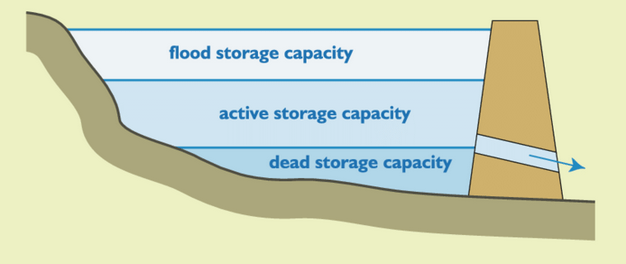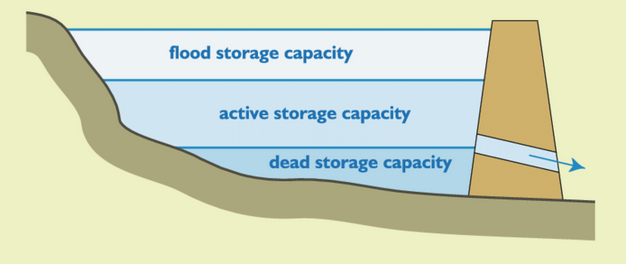Forget about praying for rain.
Instead pray for divine intervention to get the knuckleheads that run the State Water Project and Central Valley Project to loosen their death grips on their bureaucratic bible better known as their operations plan for north of the Delta reservoirs.
Unless you are on in denial it is clear by now we have a problem with water that goes beyond the drought we now find ourselves in.
We clearly can’t build our way out of it by building more dams. Besides the fact the 100-year War took less time than an environmental impact report for an on-river storage facility would take in today’s political climate that’s perfect for litigating and not problem solving, more on-river reservoirs aren’t going to do humans much good. As for the fish, build enough of them and they might just survive the next couple of 50- to 100-year megadroughts.
That sounds counterintuitive until you realize there are more ways to keep native fish numbers up than pulling the plug and emptying the proverbial bath tub during critical fish migratory periods. In fact there’s science out there that points to reducing the number of “imported” predatory fish and enhancing riverbed environments as being much more effective long range solutions given Mother Nature never provided fish with a crutch such as Shasta Dam to bridge drought.
As far as what predatory fish we’re taking about, no one wants to see the multi-million dollar bass fishing industry folks have massive coronaries so we won’t mention the non-native predator fish species by name.
A non-native predatory fish species which based on science is prompting the simplistic move to increase water flows so the remaining salmon and other native fish that bass devour can hopefully be pushed past them during critical times in their life cycles.
As for reservoirs like Shasta — that are routinely accused as being the biggest threat to their continued existence — being a chinook salmon’s best friend, put on your thinking caps.
Reservoirs have made things pretty consistent for fish after we left the Dark Ages of water management behind us which was essentially me man, you (as in fish, the environment, the birds, etc.) inconsequential.
Unfortunately, more than a few of us on all sides of the California water edition of the Tower of Babel forget the devil is in the details.
In the past few droughts there were concerns dropping reservoirs like New Melones would turn waterways such as the Stanislaus River into fish fryers. That’s because as water levels drop, warmer water is being released and at the same time river flows are lower. It is basic scientific principles at work. Shallower water with a shrinking surface heats up water more under an unforgiving sun. Experts say that warmer water released into the river at the wrong time of year — think fall salmon runs — has the potential to heat up the water a degree or two that is enough to morph the Stanislaus River water they need to swim in to take on the characteristics of a warm, suffocating blanket literally depriving them of oxygen.
Between water evaporation, expense, environmental angst that is real, and dead storage — more about that in a second — reservoirs are literally the most inefficient way for man to store water to bridge prolonged dry spills. Dams do, once all things are considered, work well for fish in a state with 40 million people.
That is why underground water recharging makes a lot of sense.
As for dead storage when a 2.4 million acre foot reservoir like New Melones is down to half capacity it doesn’t mean it has 1.2 million feet of water left that can be used. There are literally hundreds of thousands of acre feet below the outlets that will remain.
Of course if we get to that point California’s long awaited water apocalypse will have arrived.
That brings us back to a small army of bureaucrats in Sacramento and Washington, D.C., who haven’t gotten the memo the western United States is 20 years into a mega-drought and are blissfully ignorant of a thing called climate change that has almost the entire world in a tizzy.
In fairness to the bureaucrats they can’t make a move unless the high priests and priestesses in Sacramento heed the advice they are given by people who follow the science.
One such man of science that has been ignored as if he were the invisible man is Francis Chung.
The work he did overseeing the Department of Water Resources Bay Delta Modeling in 2009 and 2010 should scare the bejeezus out of you.
They took hydrology from 1922 through 2003 to determine the number of months of dead storage that would have occurred for north of Delta reservoirs from climate change and other scenarios based on 2010 water use.
The scenarios included combining climate change with the 2009 Obama biological opinion — don’t fret Trump had one too and Biden’s folks are likely working on one of their own — one with the Twin Tunnels that are repackaged as one larger tunnel, one adding north of Delta storage, and one increasing groundwater banks south of the Delta.
The good news with climate change by itself there would have been 15 months from 1922 to 2003 with dead storage at Trinity, Shasta, Oroville, and Folsom reservoirs.
Now for the bad news: It would have gone as high as 113 months when climate change is combined with more aggressive south of the Delta groundwater recharging.
With the Obama Administration’s biological opinion regarding fish flows it would have resulted in 79 months of dead storage. When climate change was matched with the Twin Tunnels it was 82 months.
Imagine having the myopic tunnel — the repackaged Twin Tunnel plan — combined with the Obama biological opinion being implemented simultaneously.
It is plausible if those two operational models were in place as were the four reservoirs from 1922 to 2003 based on recorded hydrology from those years there would have been the aggregate bottom line of nearly 15 years of dead storage months.
We haven’t gotten to dead storage yet but if the current operational plans are still in place with the climate change modeling there is a high level of consensus is correct, we’ll be in the toilet before you know it. Add fish flow changes as proposed and toss in the tunnel plan and there won’t be any water left in the proverbial toilet or tank for 161 months over a course of 81 years of hydrology assuming we’re lucking enough to repeat 1922-2003 weather patterns for the next eight decades.
In a colossal understatement, Chung concluded, “Results appear to be unsustainable. The relative frequency of dead storage conditions in upstream reservoirs indicate that significantly modified operations will be required with climate change recommendations.”
Chung in 2010 urged the Department of Water Resources to develop a re-operational plan to mitigate the impact of climate change on north of Delta reservoirs before considering increasing fish flows under the Obama biological opinion or adding a tunnel or two to the mix.
It hasn’t happened.
In other words Sacramento leaders and bureaucrats that keep sounding the climate change alarm are not following the science. Instead they are climbing into bed with those that would benefit from a tunnel when it is built as well as implementing fish flow polices based on a world where change.org petitions carry more weight than what science actually says.
This column is the opinion of editor, Dennis Wyatt, and does not necessarily represent the opinions of The Bulletin or 209 Multimedia. He can be reached at dwyatt@mantecabulletin.com






